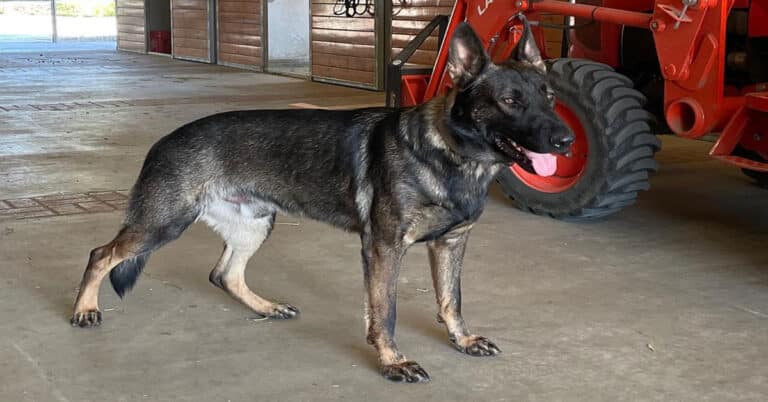Symptoms of Arthritis in Dogs
Arthritis in dogs is fairly common in dogs as they get older but it can also develop in younger dogs who have hip or elbow dysplasia or other bone and joint problems. It can occur in any breed or mix and affects both male and female dogs, spayed/neutered or intact. The symptoms of arthritis in dogs include inflamed joints, pain, swelling, and heat in the joints. Dogs usually become stiffer and their mobility is affected.
In many cases, owners don’t notice these symptoms at first because they appear gradually. Most older dogs start to slow down as they age so an owner may attribute the dog’s slower movements to age instead of arthritis. But as time goes by, you will probably recognize the fact that your dog is experiencing some degree of pain when he gets up and down from a nap or tries to climb stairs, for example. However, arthritis can range from mild to severe, and just because your dog has arthritis doesn’t mean that he has to have a reduced quality of life. There are many supplements and medications today that can reduce the pain and inflammation of arthritis and help your dog live a good quality of life as he gets older.
Osteoarthritis is the most common kind of arthritis in pets and it is occurs most frequently in larger dogs. The cartilage that acts as a cushion between bones and joints gradually breaks down as the dog ages, which results in the bones rubbing against each other which causes the pain. This kind of arthritis occurs most often between weight-bearing bones and joints.
See your veterinarian
If you begin to suspect that your dog has arthritis, it’s a good idea to take your dog to see your vet. Your vet can examine your dog and determine if your dog has arthritis, what kind it is, which joints may be affected, and how serious it is. He or she can also recommend some supplements or medication for your dog. For example, if your dog has some mild arthritis in his joints, your vet might suggest that you start giving him some glucosamine-chondroitin which seems to help both humans and animals with arthritis. You can find these supplements in your drugstore or buy them from a pet supply store. Your vet might tell you to give your dog an Ascriptin (buffered aspirin that is often recommended for dogs) if your dog seems to have some mild pain.*
*Note: Do NOT give your dog ibuprofen or acetaminophen without your vet’s advice. These over-the-counter medications can be dangerous for dogs.
If your dog has symptoms of more than mild arthritis, your vet might prescribe a painkiller for you to give him. There are several medications that are used to treat arthritis pain in dogs such as Rimadyl, Deramaxx, and Metacam, among others. Painkillers often have side effects so be sure to talk to your vet about possible side effects before giving any of these medications to your dog. In many cases it’s a good idea to have bloodwork done on your dog before giving a painkiller to make sure your dog can tolerate it.
Helping your dog at home
There are many ways you can help your dog maintain a good quality of life if he has arthritis. Here are some things you can do, in addition to providing your dog with supplements such as glucosamine-chondroitin, green-lipped mussels, MSM, and creatine, and others that are often suggested for arthritis conditions.
- Give your dog a heated dog bed. Heat and warmth are good ways to make your dog feel better if he has achy joints and bones. There are many good heated beds for senior dogs available.
- Add a ramp to the steps in your home. Many arthritic dogs begin to have problems walking up and down steps. You can make steps easier for your dog by adding a ramp to porches or stairs to the upper part of your house. If your upstairs is too high for a ramp to reach, be sure to help your dog when he needs to go up or downstairs.
- Add a ramp to your bed or other furniture. If your dog is used to getting up or down on your bed or sofa, he may have problems getting up now that he has arthritis. Add a pet ramp so he can walk up the ramp to get on the furniture.
- Help your dog with traction so he can walk better. Many older dogs with arthritis begin to have problems with traction in the house, especially if you have hardwood floors. You can help this problem by putting secure carpet runners down on the floor or by putting booties on your dog. Make sure the booties have soles with good traction. Your dog should become much more mobile again very quickly.
- Use raised pans. If your dog has difficulty lowering and raising his head and neck, get a raised feeder for his food and water. This will make it easier for him to eat and drink without pain.
There are probably other things you can do in your own home but these are just a few suggestions to help your dog once he starts to show signs of arthritis.

Having discovered a fondness for insects while pursuing her degree in Biology, Randi Jones was quite bugged to know that people usually dismissed these little creatures as “creepy-crawlies”.







